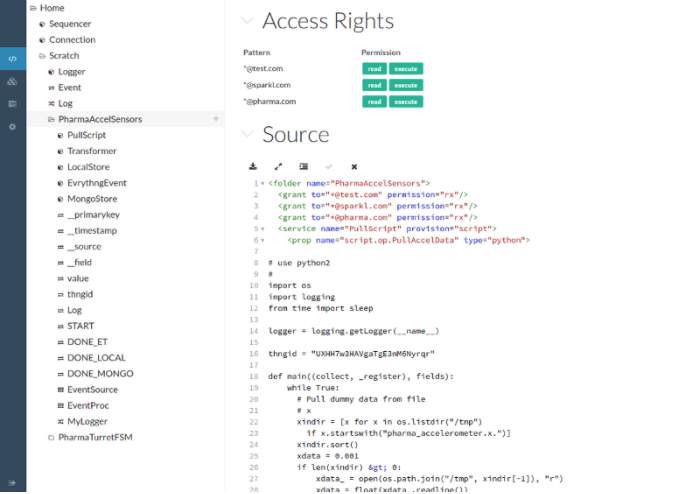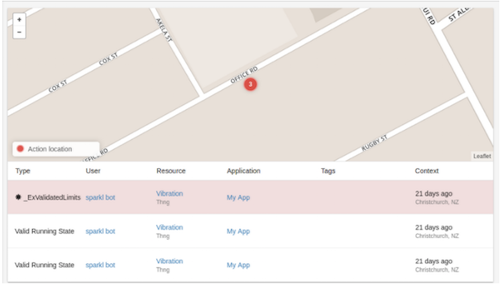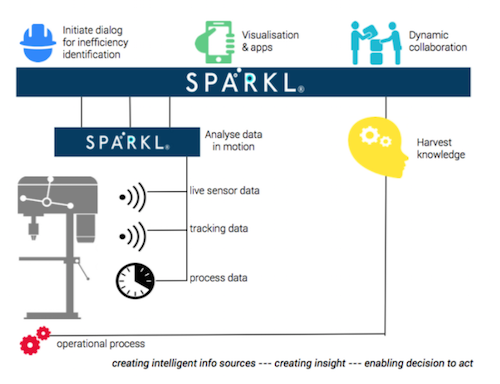Quality Assurance in Manufacturing
Pharmaceutical companies spend billions of dollars developing, marketing and distributing drugs to the public. It is a complex, intricate process.
Yet for decades, their factories have been manufacturing drugs in rather dated ways, “mixing ingredients in large vats and in separate steps, often at separate plants and with no way to check for quality until each step was finished.”
Any moves to modernise have been blocked by cost, complexity and regulation. Ageing factory equipment gaining wear-and-tear are used time and time again, resulting in a severe knock-on effect for pharmas around the world.
The supply chain is a fractured one, and could instantly fall apart in the event of a drug recall. Unplanned downtime can cost factories as much as $2 million for a single incident.
In early 2016, SPARKL and Cisco worked with British pharmaceutical giant GSK to develop a proof-of-concept (PoC) using the SPARKL Sequencing Engine technology, in an effort to solve these challenges.
There is immeasurable value in collecting and analysing factory sensor data, creating efficiency, reducing downtime and enabling local intelligence amongst the factory’s most important assets - its machines.
SPARKL created a digital profile system for physical devices in a specific pill production train, e.g. motors and screw feeds, creating smarter assets. This enabled the devices to spot anomalies within its pill production train in operation, therefore:
- Eliminating tasks from the scheduled maintenance procedures, focusing only on work necessary to maintain compliance and performance
- Predicting failures in advance, reducing negative impact on production
- Extending the operational lifetime of production equipment and components, whilst maximising performance opportunity
- Understanding why a machine or component has failed
- Taking advantage of a component upgrade potential to maximise operational performance over longer periods
How it Works
The PoC is based on SPARKL’s finite-state machine (FSM) technology, which features a breakout detection algorithm.
“A finite-state machine is a [computing] model used to represent and control execution flow. It’s perfect for implementing artificial intelligence… producing great results without complex code.”
SPARKL is much more expressive and precise than the well-known FSM abstraction, but it can directly import such a technology.
SPARKL operates on the “plug-and-play” principle - i.e. almost no configuration or manual intervention required. All that was needed was to install the FSM onto Intel Arduino and Edison boards. Small yet powerful, these boards were deemed suitable for the PoC as they easily connect to wireless networks, and additionally work over Linux and Ubuntu, for which SPARKL has been primarily developed.
Through the FSM, SPARKL kept track of every object on the manufacturing line and in turn, was able to detect anomalous trends in log data, called breakouts. Possible breakouts could be confirmed as such by an admin, so that the algorithm learns without requring pre-training.
In this PoC, SPARKL was configured to pick up sensors attached to a non-vibrating part of a factory machine. Readings were taken from a wealth of different sensors across the factory floor - vibration, speed and temperature. If one of the sensors exceeded their normal operating range, then it may have been indicative of a problem that warranted investigation.
Depending on the status of the readings, the finite-state machine would be in a ‘red’, ‘orange’ or ‘green’ state.
This could be useful in a number of scenarios. For example, registering the disproportionate temperature in the manufacturing of a particular vaccine, which could render the batch unusable.
Process

1. Two sets of mixes (SPARKL config handling interactions between machines) are written (in Python) in the SPARKL Developer Console — one which pulls data into SPARKL, and one which acts on, and processes this data.

2. SPARKL orchestrates a workflow to execute on those services for every event that comes in. The mix sends sensor data as alerts to messaging app Cisco Spark and actions to Internet of Things platform EVRYTHNG.

3. If a sensor is in a ‘red’ or ‘orange’ state, and therefore anomalous, an admin is notified over Cisco Spark and EVRYTHNG with an alert. SPARKL stores this data over a local cache service, so it can be locally analysed.

Example: Example: Here, the accelerometer has dropped significantly, putting the FSM in a ‘red’ state. An admin is alerted in Cisco Spark and EVRYTHNG (displayed as a ‘red’ action).

4. The event logs from this mix are forwarded through MongoDB — and the data is studied and visualised using SlamData Analytics.
5. The admin would additionally provide feedback on whether the state designation, determined automatically, and with no pre-training required, was accurate or not. The breakout detection algorithm, as a result, trains itself to recognise specific types of pill trains.
Summary

By the simple act of introducing sensors into the manufacturing process, key performance attributes can be corroborated, together with the easy deployment of SPARKL with FSM + breakout detection, immediate benefit can be obtained out-of-the-box. SPARKL can easily detect anomalies in sensor data readings, and alert admins to take action.